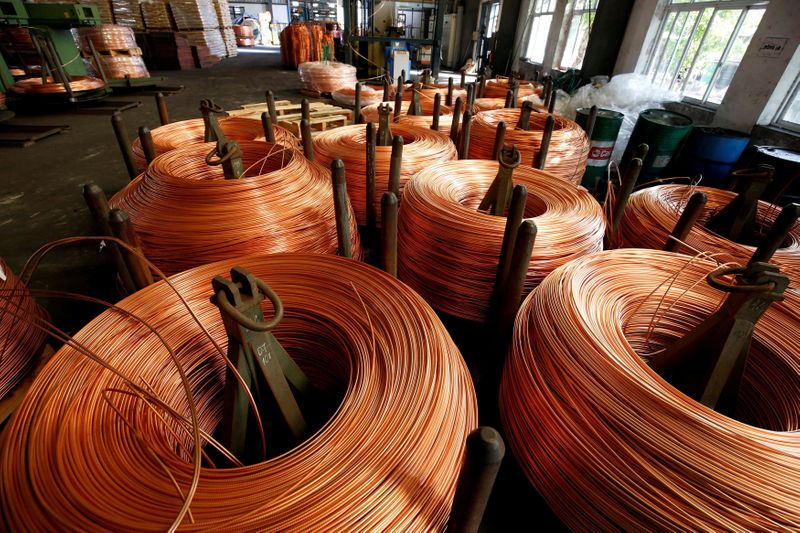Commodities
Copper prices dip on stronger dollar and LME stockpile increase

© Reuters
Copper prices on the London Metal Exchange (LME) experienced a decline today, with a 1.3% drop to $8,500 per metric ton. This downturn is attributed to the recent strength of the US dollar and an increase in stocks within LME warehouses. The metal, often regarded as an indicator of economic health, has come under close observation following these developments.
Last week, reached a four-month high at $8,640 but has since faced challenges due to various market factors. Notably, LME stockpiles have swelled to 174,900 tons compared to mid-year figures. This growth in inventory is occurring alongside mixed signals from China’s November factory activity results among other factors.
Additionally, the proportion of cancelled warrants in the LME has seen a significant rise, hinting at possible future withdrawals from inventories. As the US dollar strengthens, the cost for holders of other currencies increases, leading to a dampened demand for dollar-priced metals such as copper.
This comes after recent supply concerns had momentarily supported copper prices. On Friday, First Quantum Minerals (OTC:) Ltd suspended its annual production guidance for its Cobre Panama mine due to ongoing contract disputes with the government and initiated arbitration proceedings. Despite these operational challenges contributing to supply constraints, the price of copper still fell by 0.4% to $8,579.50 per ton today due to the broader market conditions.
In response to these supply uncertainties and reflecting market tightness, global miners and Chinese smelters have agreed on lower treatment and refining charges (TC/RCs) for copper concentrate for 2024. This marks the first decrease after three years of stability in TC/RCs. Correspondingly, the Shanghai Futures Exchange’s January copper contract earlier saw an uptick of 0.8%, closing at 68,880 yuan ($9,658.15) per ton amidst these developments.
This article was generated with the support of AI and reviewed by an editor. For more information see our T&C.
Commodities
Oil prices rise; U.S. crude inventories plunge, Russia-Ukraine truce eyed
Commodities
India’s Reliance to stop buying Venezuelan oil over US tariffs, sources say
Commodities
Oil prices climb on Venezuela supply worries

 Forex3 years ago
Forex3 years agoForex Today: the dollar is gaining strength amid gloomy sentiment at the start of the Fed’s week

 Forex3 years ago
Forex3 years agoUnbiased review of Pocket Option broker

 Forex3 years ago
Forex3 years agoDollar to pound sterling exchange rate today: Pound plummeted to its lowest since 1985

 Forex3 years ago
Forex3 years agoHow is the Australian dollar doing today?

 Cryptocurrency3 years ago
Cryptocurrency3 years agoWhat happened in the crypto market – current events today

 World3 years ago
World3 years agoWhy are modern video games an art form?

 Commodities3 years ago
Commodities3 years agoCopper continues to fall in price on expectations of lower demand in China

 Economy3 years ago
Economy3 years agoCrude oil tankers double in price due to EU anti-Russian sanctions



























